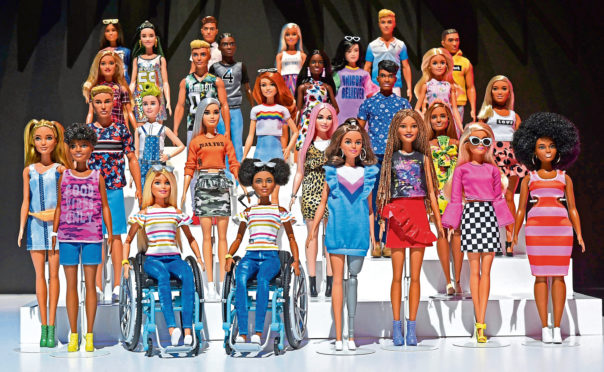
Despite standing at just 11.5 inches tall, Barbie has become one of the world’s biggest household names.
And today, Barbara Millicent Roberts – to give her full name – turns 60.
First debuted at the American Toy Fair on March 9 1959, more than one billion plastic Barbie dolls have been sold to children around the world, and today she still remains one of the most popular toys of all time.
In fact, more than 100 dolls are sold every single minute, and one DreamHouse is sold every two minutes.
The brainchild of Ruth Handler, the co-founder of toy manufacturer Mattel, Barbie was originally created to show little girls they had more options than “mom or caregiver”.
As Handler explained in her 1994 autobiography, Dream Doll: The Ruth Handler Story, she wanted her own daughter to dream big: “My whole philosophy of Barbie was that through the doll, the little girl could be anything she wanted to be.
“Barbie always represented the fact that a woman has choices.”
Over the years Barbie has fulfilled that role, holding down more than 200 careers, including her first job as a fashion editor in 1960, a CEO, a pilot, a police officer, and a robotics engineer.
However, over her lifetime, Barbie has still courted controversy, with many critics focusing on the doll’s tiny proportions – tall, slender, blonde and picture-perfect, Barbie is often derided as the embodiment of unrealistic beauty standards.
If she was a real woman, Barbie would stand at 5ft 9in tall, measure 36 inches across her chest, 18 inches around her waist, and 33 inches from hip to hip.
According to research undertaken in 2013, human Barbie would be forced to walk on all fours due to her restrictive proportions.
In a bid to combat negative press, Mattel introduced new characters with different ethnicities and body types over the years.
In 1968, Barbie got a new best friend called Christie, one of the industry’s first black dolls, but it wasn’t until 1980 that the first diverse Barbie was released.
Little girls then had to wait until 2016 to see curvy, petite and tall versions of their favourite figurine.
It was this model that made Time magazine’s front cover, with the title asking; “Now can we stop talking about my body?”
Today, more than 100 designers take 12 to 18 months to create the latest Barbie, with multiple body types and dozens of skin tones available.
In the 60 years since greeting the world in her black and white swimsuit, Barbie has revolutionised playtime.

Enjoy the convenience of having The Sunday Post delivered as a digital ePaper straight to your smartphone, tablet or computer.
Subscribe for only £5.49 a month and enjoy all the benefits of the printed paper as a digital replica.
Subscribe